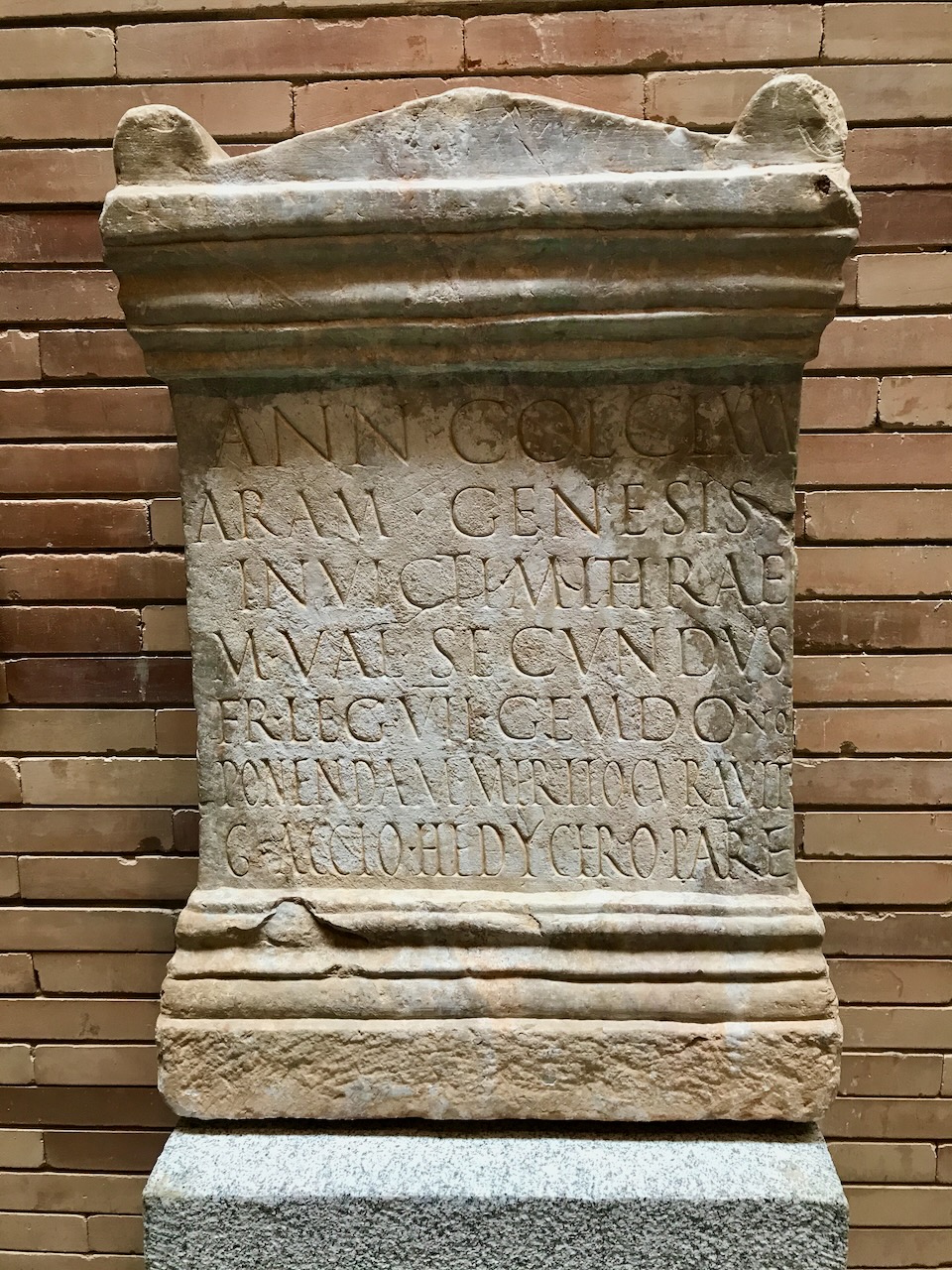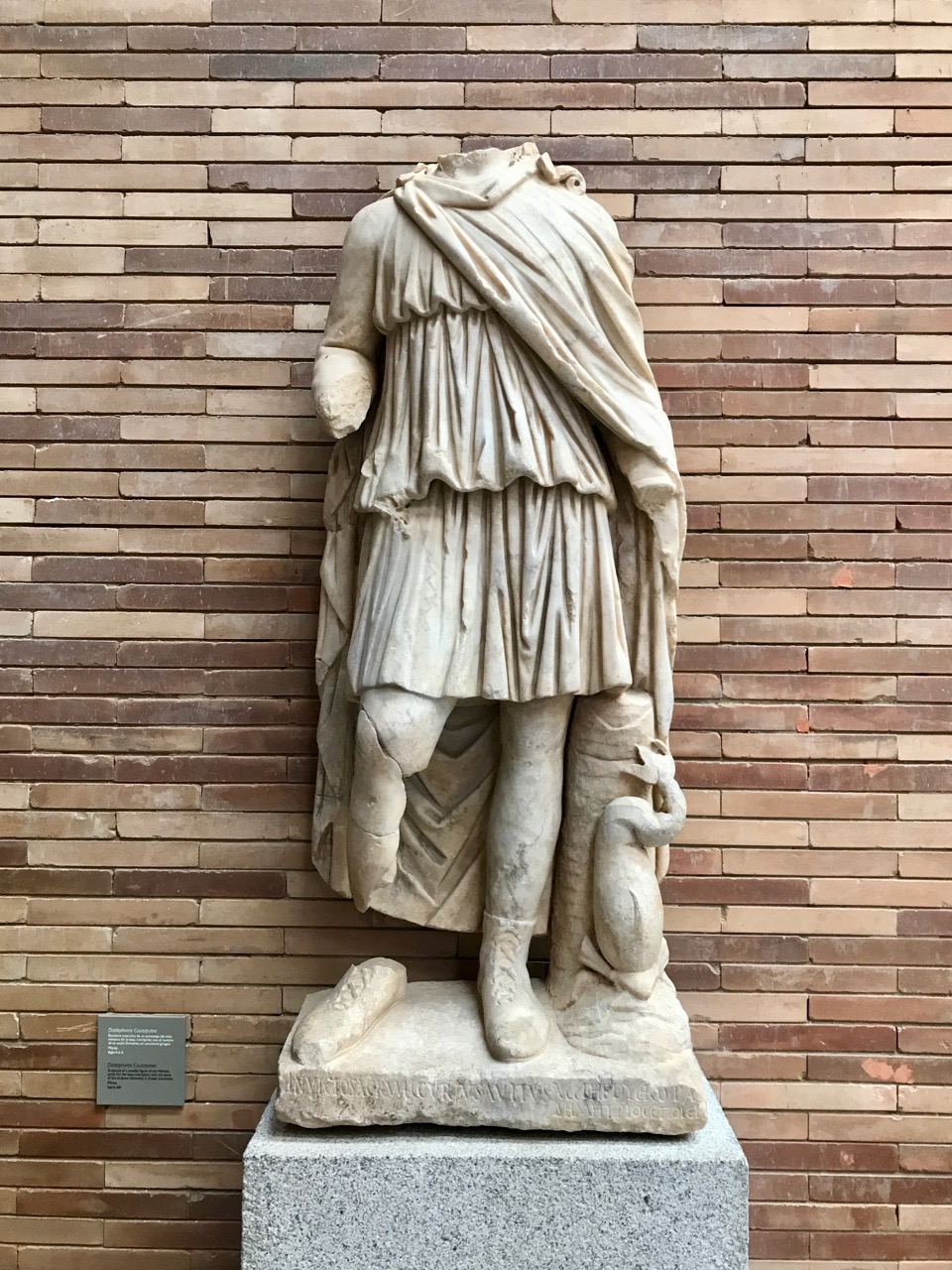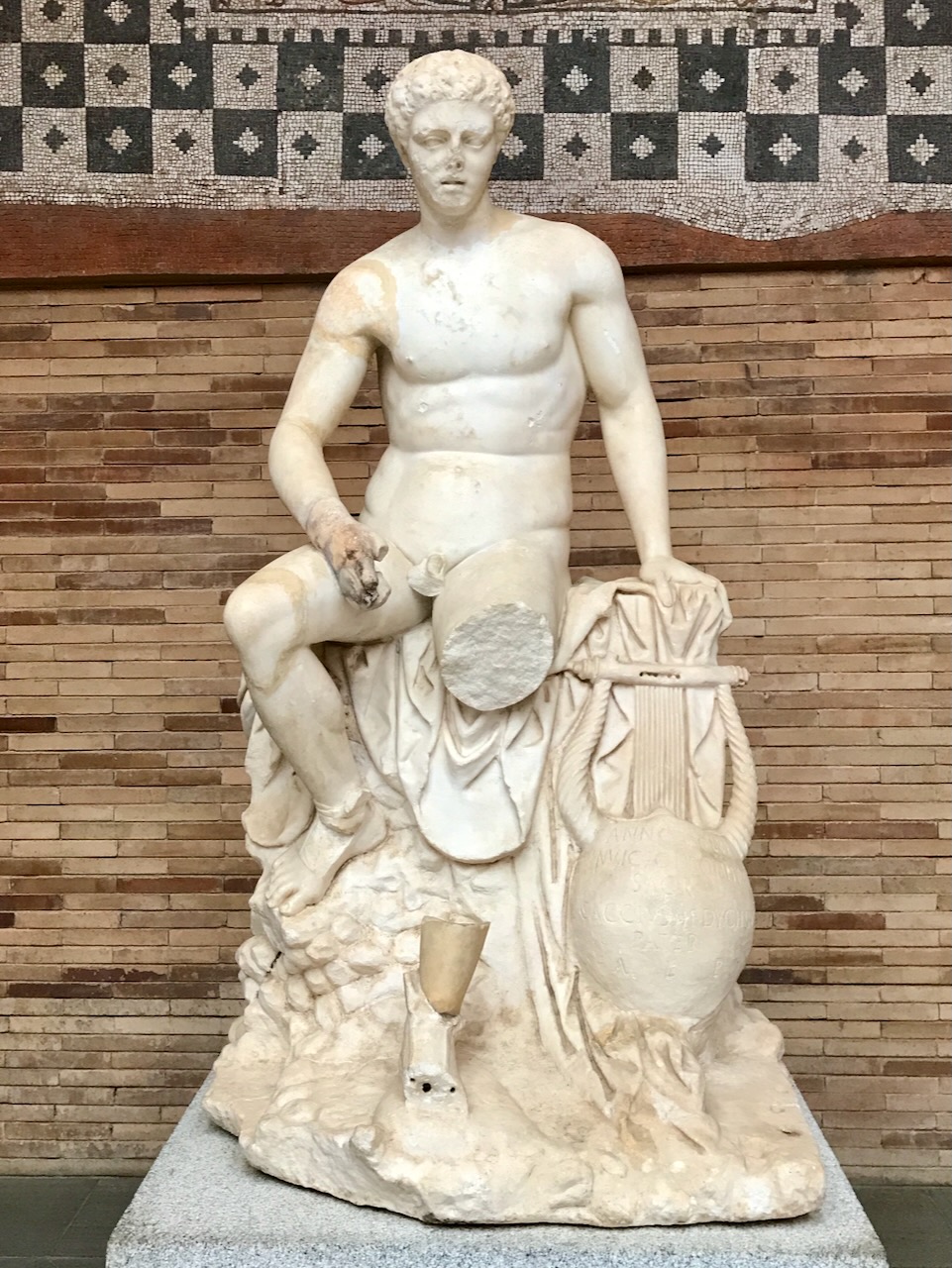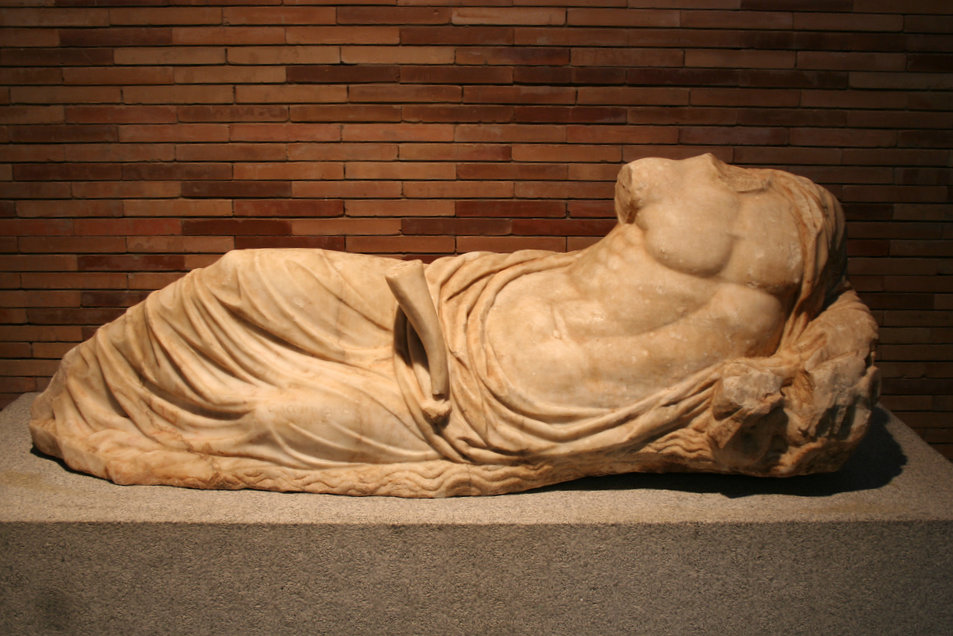
Gaius Accius Hedychrus
Pater Patrum at Emerita Augusta
Biography
of Gaius Accius Hedychrus
- Gaius Accius Hedychrus was a Pater.
- Active c. 155 in Emerita Augusta, Lusitania (Hispania).
TNMP 9
The pater Gaius Accius Hedychrus was promoted to the higher rank of pater patrum, as indicated by the sculpture of Oceanus, which must be later than the rest of the monuments found in the Great Mithraeum of Emerita, with his name inscribed on it.
He was probably a freedman of the gens Accii.
Marcus Valerius Secundus is a centurion frumentarius, thus belonging to the officium of the provincial governor; his origin seems to be in Tarraco where his epitaph was found paid for by his freedmen.
During the reign of Antoninus Pius (138-161 AD), in the year 155, if we follow the traditional chronology of the foundation of Emerita Augusta, there was at least temporarily in the capital of Lusitania an interesting character, Marcus Valerius Secundus, who presumably maintained a close relationship with an ancient freedman of presumed oriental origin, Gaius Accius Hedychrus.
[...] He was a freedman whose Eastern Greek cognomen seems to indicate that his origins were in the eastern part of the Empire. What is important in our case is that we find both characters working in unison for the consolidation of Mithraism in Emerita.
Possibly the initiative was a joint one, combining the interest of Marcus Valerius Secundus, derived from his condition as a frumentary dependent on the governor of Tarraconensis, and that of Caius Accius Hedychrus, a priest of the cult. We must suppose that in this relationship, the frumentary contributed with the support of the political and administrative authorities, as I will insist on later, and the priest with the knowledge of the religious requirements to promote the cult in the provincial capital of Lusitania.
We do not know what the exact link was between Valerius Secundus and Accius Hedychrus, promoters of Mithraism in Merida. The testimonies show how they acted in a coordinated manner, with Hedychrus assuming priestly functions.
[...] The altar [...] paid for by Marcus Valerius Secundus when Caius Accius Hedychrus was acting as pater, seems to celebrate the inauguration of the great Mithraeum of Emerita on the one hundred and eightieth anniversary of the foundation of the colony, i.e. in the year 155.
By that time, Caius Accius Hedychrus and Marcus Valerius Secundus had amassed an enormous fortune to build the great mithraeum, capable of competing with the most lavish in the Empire at the time, and to decorate it with excellent cult statues.
For this purpose they enlisted the services of a Greek sculptor, Demetrios, perhaps one of those itinerant artists hired according to the needs of each place, who would place his workshop at the service of the patrons of the Emeritan mithraeum.
Demetrios himself bears witness to this by leaving his name in Greek on one of the most accomplished pieces, the Dadaphoros. Under his direction some of the finest works were sculpted, following the models of his probable place of origin, Aphrodisias, in Asia Minor.
[...] Undoubtedly, our protagonists had to mobilise important members of the local oligarchy, won over to the cause by the institutional connections of the centurion frumentarius.
It is noteworthy that practically all the materials are archaeologically dated to the middle of the 2nd century, coinciding with the evergenetic action of Marcus Valerius Secundus and Gaius Actius Hedychro, giving the impression that there was meticulous planning in the foundation of the mithraeum in the capital and in the commissioning of its decorative elements.
[...] The iconographic programme of the mithraeum includes a dozen sculptures, among them the Hermes — it should be noted that Hermes-Mercury is the planet associated with the first incatic degree, corax — paid for by Accius Hedychrus, which increases its cultic relevance. [...]
From all this it can be deduced that in the middle years of the 2nd century, there was proselytising work in Mérida, thanks to which a Mithraic corporation was organised around two central figures, the centurion frumentarius of Legio VII, Marcus Valerius Secundus and the freedman of oriental origin, Gaius Accius Hedychrus. We do not know from where they obtained the important economic resources used in the erection of the mithraeum and its ostentatious decoration for the development of the devotion of an undoubtedly important community of the faithful.
—Jaime Alvar (2020) Mitra en Hispania
References
- Epigraphic Database Heidelberg. Altar of Merida consecrated by Marcus Valerius Secundus in EDH
- Epigraphic Database Heidelberg. Cautopates from Casa del Mitreo of Mérida in EDH
- Epigraphic Database Heidelberg. Mercury of Mérida in EDH
- Epigraphic Database Heidelberg. Oceaunus of Mérida in EDH
- Epigraphik-Datenbank Clauss / Slaby. Altar of Merida consecrated by Marcus Valerius Secundus in EDCS
- Epigraphik-Datenbank Clauss / Slaby. Cautopates from Casa del Mitreo of Mérida in EDCS
- Epigraphik-Datenbank Clauss / Slaby. Mercury of Mérida in EDCS
- Epigraphik-Datenbank Clauss / Slaby. Oceaunus of Mérida in EDCS
- Hispania Epigraphica. Mercury of Mérida in HE
- Hispania Epigraphica. Altar of Merida consecrated by Marcus Valerius Secundusin HE
- Hispania Epigraphica. Oceaunus of Mérida in HE
- Hispania Epigraphica. Cautopates from Casa del Mitreo of Mérida in HE
- Jaime Alvar (2020) ‘Estudio histórico – Mitra en Hispania.’ Mitra en Hispania
- Mitra en Hispania. Oceaunus of Mérida in MEH
- Mitra en Hispania. Mercury of Mérida in MEH
- Mitra en Hispania. Cautopates from Casa del Mitreo of Mérida in MEH
- Mitra en Hispania. Altar of Merida consecrated by Marcus Valerius Secundus in MEH
Mentions
Altar of Merida consecrated by Marcus Valerius Secundus
TNMM 338
This altar is dedicated to the birth of Mithras by a frumentarius of the Legio VII Geminae.
Cautopates from Casa del Mitreo of Mérida
TNMM 242
The sculpture of the solar god is signed by its author, Demetrios.
Δημήτριος ἐποίει
Demetros made it.
Mercury of Mérida
TNMM 394
The statue of Mercury in Merida bears a dedication from the Roman Pater of a community in the city in 155.
Oceaunus of Mérida
TNMM 428
The sculpture of Oceanus in Merida bears an inscription by the Pater Patrorum Gaius Accius Hedychrus.





Comments
Add a comment